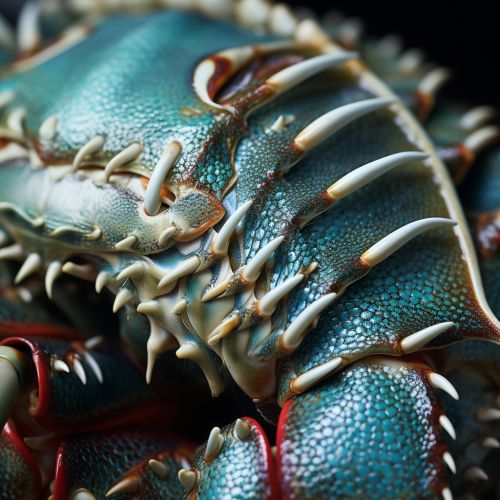Chitin
Introduction
Chitin is a long-chain polymer of an N-acetylglucosamine, a derivative of glucose, and is found in many places throughout the natural world. It is the main component in the cell walls of fungi, the exoskeletons of arthropods such as crustaceans (e.g., crabs, lobsters and shrimps) and insects, the radulae of molluscs, and the beaks of cephalopods, including squid and octopuses Read more about cephalopods.


Structure and Properties
Chitin is a polysaccharide made from units of N-acetylglucosamine. These units form covalent β-(1→4)-linkages (similar to the linkages in cellulose). As a result of these bonds, chitin is a relatively rigid material and has a high tensile strength. Furthermore, chitin is also somewhat flexible and can be transparent, depending on its arrangement.
Biological Function
In nature, chitin has many functions. It serves as a protective barrier and structural support for various organisms. For example, in insects and crustaceans, chitin forms the hard exoskeleton that protects the animal's softer internal organs. In fungi, chitin is found in the cell walls, providing rigidity and structural integrity.
Industrial Uses
Chitin is used in a variety of industrial applications due to its biodegradability and versatility. It is used in agriculture as a seed treatment and in pest control. In the medical field, chitin is used in bandages to reduce bleeding and as an antibacterial agent. It is also used in the food industry as a food additive and in the production of edible films and coatings.
Chitin Derivatives
Chitin can be modified to create a variety of derivatives, each with unique properties. The most common derivative is chitosan, produced by deacetylating chitin. Chitosan has a variety of uses in agriculture, medicine, and industry. Other derivatives include carboxymethyl chitin and chitin sulfate.
Environmental Impact
As a biodegradable polymer, chitin has a minimal environmental impact. It is broken down by bacteria in the environment, which convert it back into its monomer units. This makes chitin a sustainable material for various applications.
